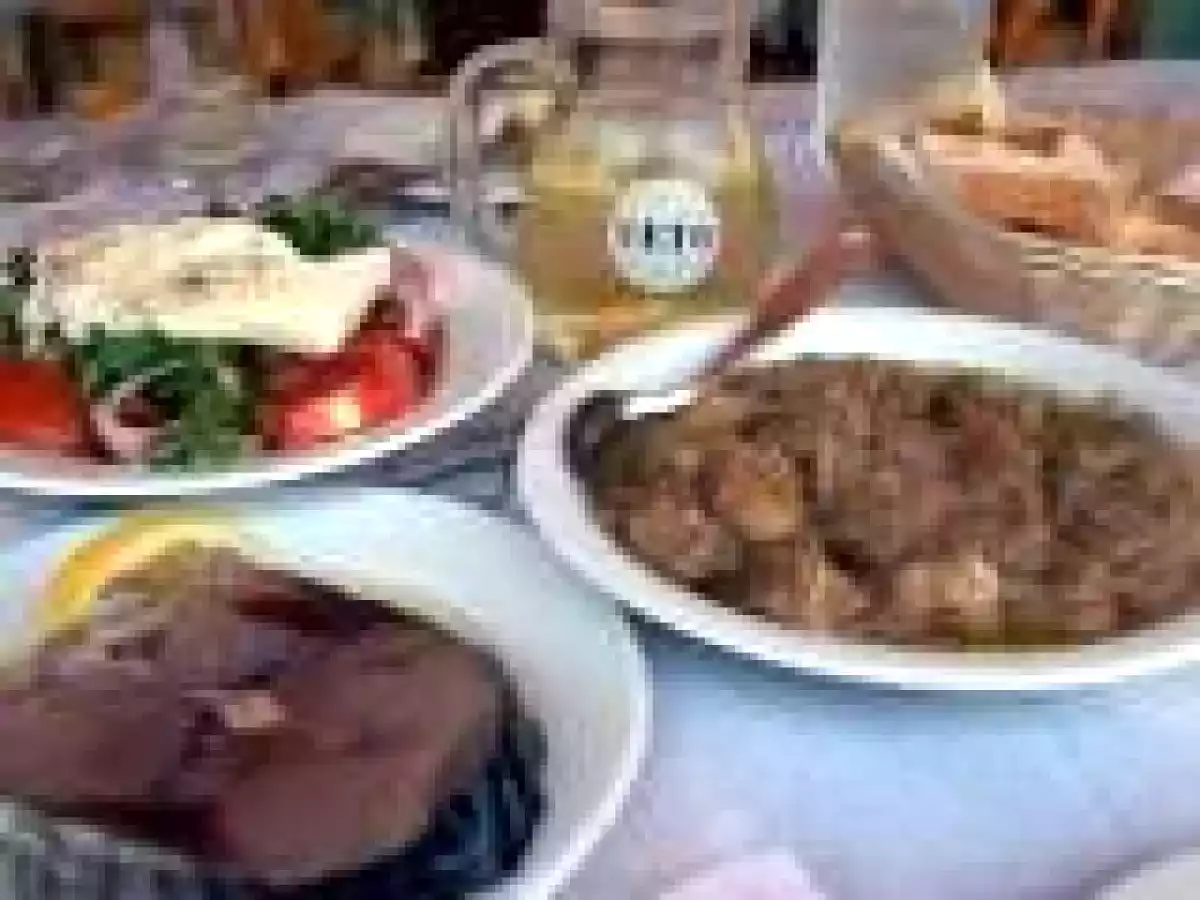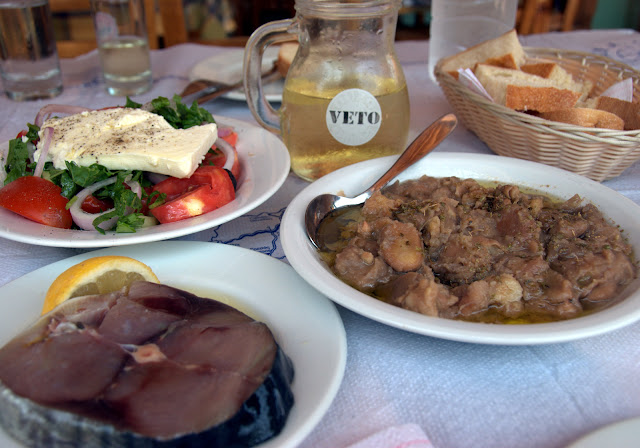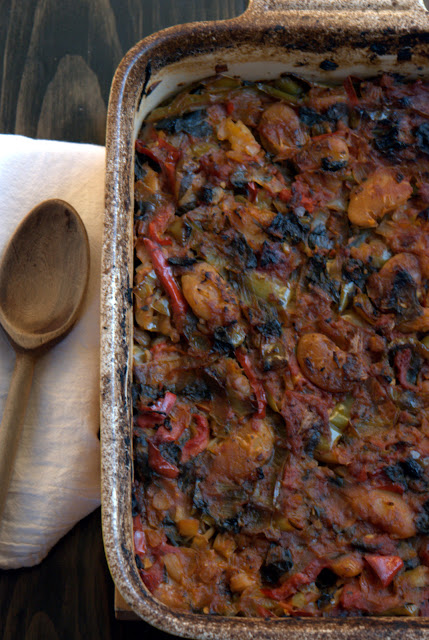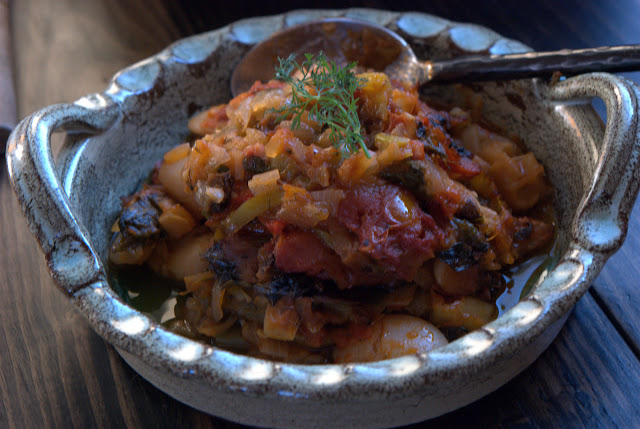Greek Inspired Gigandes (Lima Beans)
vote now


Also, made some new friends...

The dish I prepared today was, not surprisingly, inspired by my travels through Greece. This "Greek inspired" dish -- gigandesor gigantesor yigandes -- is made with giant lima beans, which are baked in the oven with peppers, onions, and tomatoes for a few hours until all the liquid is absorbed and the top layer gets a bit charred and caramelized. As the tomatoes, peppers, and onions cook down, they create a thick, savory sauce for the tender beans.
This dish pairs well with a big Greek salad (aka horiatiki salata), when tomatoes are back in season, and some grilled octopus (can never get enough of that). And, if you were in certain parts of Greece, Crete in particular, you would end your meal with a complimentary shot of raki (aka fire water); a local spirit, typically homemade by individual families. It is a sign of hospitality (or cruel and unusual punishment, depending on your affinity for raki) in Greece to offer your guest raki and fresh fruit at the end of a meal. Yamas (cheers)!


Assortment of peppers (used two cubanelle, one anaheim, one banana, two fresno, and two red bell), thinly sliced
1/2 cup olive oil
2 medium onions, chopped
4 garlic cloves, minced
1 28-ounce can whole tomatoes (preferably San Marzano)
1/4 cup chopped fresh dill
1 teaspoon dried oregano
1 teaspoon smoked paprika
1 teaspoon cayenne pepper
Sea salt and fresh ground black pepper to taste
1 cup water
5 ounces baby spinach
Feta cheese for topping (optional)


The following day...
Preheat the oven to 375 degrees.
Bring the beans to a boil, and simmer for about 30 minutes until they begin to soften.
Saute the onions in a large skillet with ~3 tablespoons of olive oil, until translucent. In a large bowl mix the peppers, garlic, tomatoes, dill, spinach, the remaining 5 tablespoons of olive oil, and spices, along with the beans, and onions. Transfer to a large casserole pan.
Cover with foil and bake for 1 hour. Remove the foil and bake for another 45 to 50 minutes minutes, until most of the water has been absorbed. Then, turn up the heat to broil for 15 to 20 minutes, so that the top layer gets a bit charred and caramelized.
Serve hot or at room temperature, with a sprig or two of dill, some feta (optional), a drizzle of olive oil, and some course sea salt.


Wild Greens and Sardines
Comments